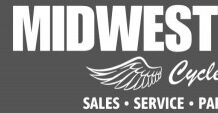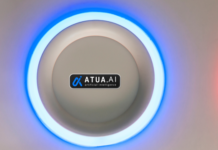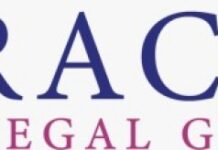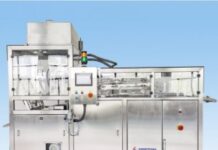What is the best method for printing t-shirt in terms of cost and quality?
(Isstories Editorial):- Charlotte, North Carolina Nov 12, 2025 (Issuewire.com) – Printful, a global leader in print-on-demand fulfillment, today shared new guidance to help brands, creators, and merch sellers choose the most cost-effective t-shirt printing method without sacrificing quality. Drawing on market data, third-party research, and its own production experience, Printful outlines a practical decision framework that places digital print-on-demand at the center for modern ecommerce sellers while recognizing where traditional methods still shine.
More on Isstories:
- Amit Gupta Launches Online SEO Course in Delhi for Students, Professionals, and Entrepreneurs
- Moussa Sheikh Mous Becomes a Leading Voice in the European Arab-Finance Community Official NBX 2026
- D-D Hardware: Future Leading Hydraulic Door Closer Factory Delivering Quality With International Certification
- Colleen Mazzoni, Recognized by BestAgents.us as a 2025 Top Agent
- Homagic to Deliver 100 Zero-Carbon Modular Schools Across Africa by 2027 – UN-Backed Initiative
Industry analysts estimate the global custom t-shirt printing market at roughly $5 to $6 billion today, with forecasts suggesting it could grow to between $10 and $16 billion over the next decade, driven by ecommerce, personalization, and on-demand production. Within that growth, the choice of printing method directly affects a brand’s unit cost, quality, and ability to test new designs quickly.
“When people ask what the best t-shirt printing method is, they are really asking how to get the best mix of cost, quality, and flexibility for their business model,” said Davis Srmi, Director of Growth Marketing at Printful. “For a lot of online brands, especially those using print-on-demand, the smart answer is to combine modern digital techniques like direct-to-garment with an operations partner that absorbs the production complexity in the background.“
Srmi added, “Our job at Printful is to sit in the middle of that decision. We help sellers match the right printing technology with their order volume, fabric choice, and design style so that they can offer premium quality t-shirts at sustainable margins.“
The Question Behind The Question: Cost, Quality, Or Flexibility
Recent guides comparing t-shirt printing methods highlight that there is no single method that is universally superior. Screen printing remains one of the most cost-effective options for large, repeat orders. At the same time, digital processes, such as direct-to-garment, direct-to-film, and sublimation, offer greater flexibility for small batches, intricate designs, and frequent drops.
Market reports also note that direct-to-garment printing has grown quickly because it delivers high-quality prints with fast turnaround and cost-effective short-run production, making it attractive for both small brands and established apparel companies.
At the same time, analysis of DTG pricing shows that a standard digitally printed t-shirt can have blank and print costs in the low single digits, while typical selling prices range from $20 to $30. This margin structure supports sustainable businesses when sellers control return rates and maintain quality.
For many brands, the real challenge is not learning every technical detail but rather choosing a practical path that balances cost and quality from the outset.
Comparing The Leading T-Shirt Printing Methods
Printful’s guidance focuses on the methods its merchants most often consider when choosing how to print a t-shirt.
Screen printing for large, repeat orders
Traditional screen printing requires upfront setup and separate screens for each color, which increases starting costs but drives per-unit prices down at high volumes. It is well-suited for established designs, bulk corporate orders, or merchandising programs where artwork changes infrequently. Market comparisons consistently note screen printing as the lowest-cost per-piece option for large runs when designs are simple.
Anchor-style phrases such as “classic screen printing for bulk t-shirt orders” and “low per-unit cost for large print runs” help communicate this role in seller education.
Direct-to-garment for high detail and small batches
Direct-to-garment (DTG) printing utilizes specialized inkjet printers to apply water-based inks directly to fabric, making it ideal for full-color, detailed designs and on-demand production. Industry reports describe DTG as high quality, flexible, and exceptionally cost-effective for short runs and one-off orders.
For online brands and creators, this often becomes the best t-shirt printing method for small batches, limited drops, and test collections where holding inventory would be risky. Phrases like “premium DTG printing for print-on-demand t-shirt” and “high detail digital printing for custom apparel” act as natural anchor text in product and content marketing.
Direct-to-film and sublimation for specialty use cases
Emerging methods, such as direct-to-film (DTF/DTFlex) and sublimation, broaden the possibilities for different fabrics and placements. Comparative guides highlight that DTF can offer strong durability and color on a wide range of materials, while sublimation delivers vibrant prints on polyester, particularly for all-over designs.
Used strategically, these methods complement DTG and screen printing rather than replace them, allowing brands to offer everything from simple logo tees to full-coverage performance apparel.
How Printful Balances Cost And Quality For Merchants
Printful positions itself at the center of these choices by operating multiple printing technologies under one print-on-demand platform. Instead of forcing merchants to commit to a single method, Printful lets them match the technique to the use case.
Key advantages for brands include:
- No equipment or inventory. Sellers can access professional DTG and other methods through Printful’s global network without buying their own presses or printers, which lowers upfront cost and risk.
- Built-in quality control. Printful combines tested blanks, calibrated machines, and standardized workflows so that designs created for print-on-demand t-shirt have consistent outcomes across batches and regions.
- Flexible order sizes. Merchants can sell a single digitally printed t-shirt to a niche customer or thousands of units of a proven bestseller, with Printful routing orders to the most suitable method behind the scenes.
- Education and decision support. Printful regularly publishes guidance that explains when to choose each printing method, using practical language such as “best t-shirt printing method for new online brands” or “how to choose between screen printing and DTG”.
For merchants distributing through marketplaces, social platforms, and brand sites, this approach enables them to offer high-quality printed t-shirts while keeping the cost per unit and operational overhead under control.
Practical Takeaways For Brands Choosing A Printing Method
Drawing on market data and production experience, Printful highlights four key takeaways for brands deciding how to print t-shirts in 2025:
- Define volume and product strategy first
For large, predictable orders, classic screen printing often delivers the lowest per-unit cost. For dynamic online catalogs, frequent launches, and global fulfillment, digital print-on-demand methods like DTG usually strike a better balance between cost, quality, and flexibility. - Treat digital printing as the default for testing
Direct-to-garment printing is particularly well-suited to testing new designs because it handles one-offs and small batches with high detail and no setup screens. Many small brands now use DTG and print-on-demand to validate designs before movinga few proven winners into higher-volume programs. - Look at the total margin, not just the print cost
While per-shirt printing costs vary by method, blank choice, and design complexity, research shows that digitally printed t-shirts often sell at prices that support healthy margins, especially when brands avoid overproduction and write-offs. - Use a single partner to manage multiple methods
By working with a platform like Printful that supports multiple printing techniques and global fulfillment, brands can simplify their supply chain, keep quality consistent, and future-proof their catalog as new methods mature.
About Printful
Printful is a global print-on-demand platform that empowers creators, entrepreneurs, and brands to sell custom products online with no upfront inventory. With fulfillment centers across multiple continents and seamless e-commerce integrations, Printful handles production, packaging, and shipping, allowing sellers to focus on design, marketing, and growth.
Printful Inc
[email protected]
11025 Westlake Dr, Charlotte, NC 28273, USA
http://printful.com
This article was originally published by IssueWire. Read the original article here.


















